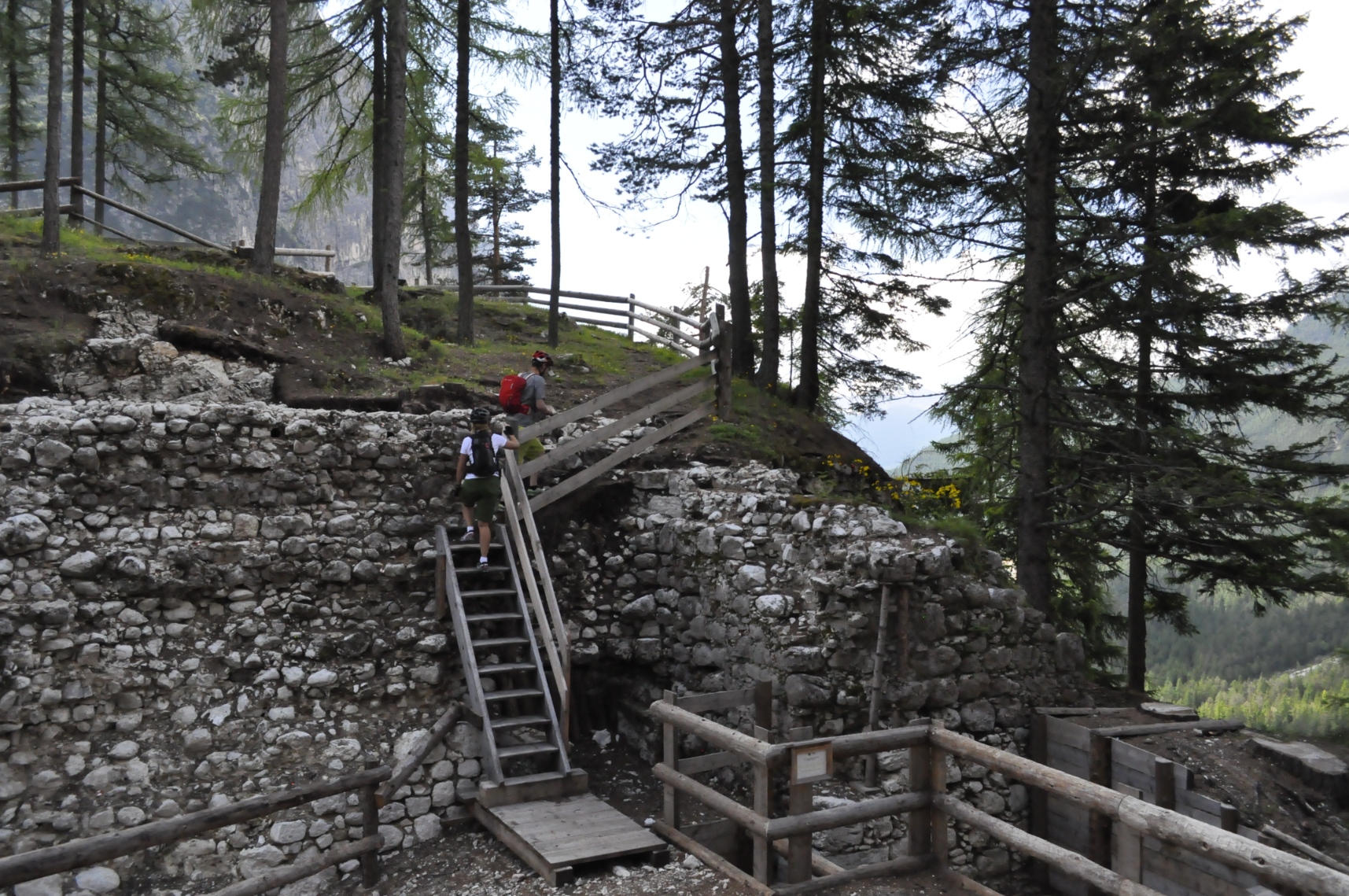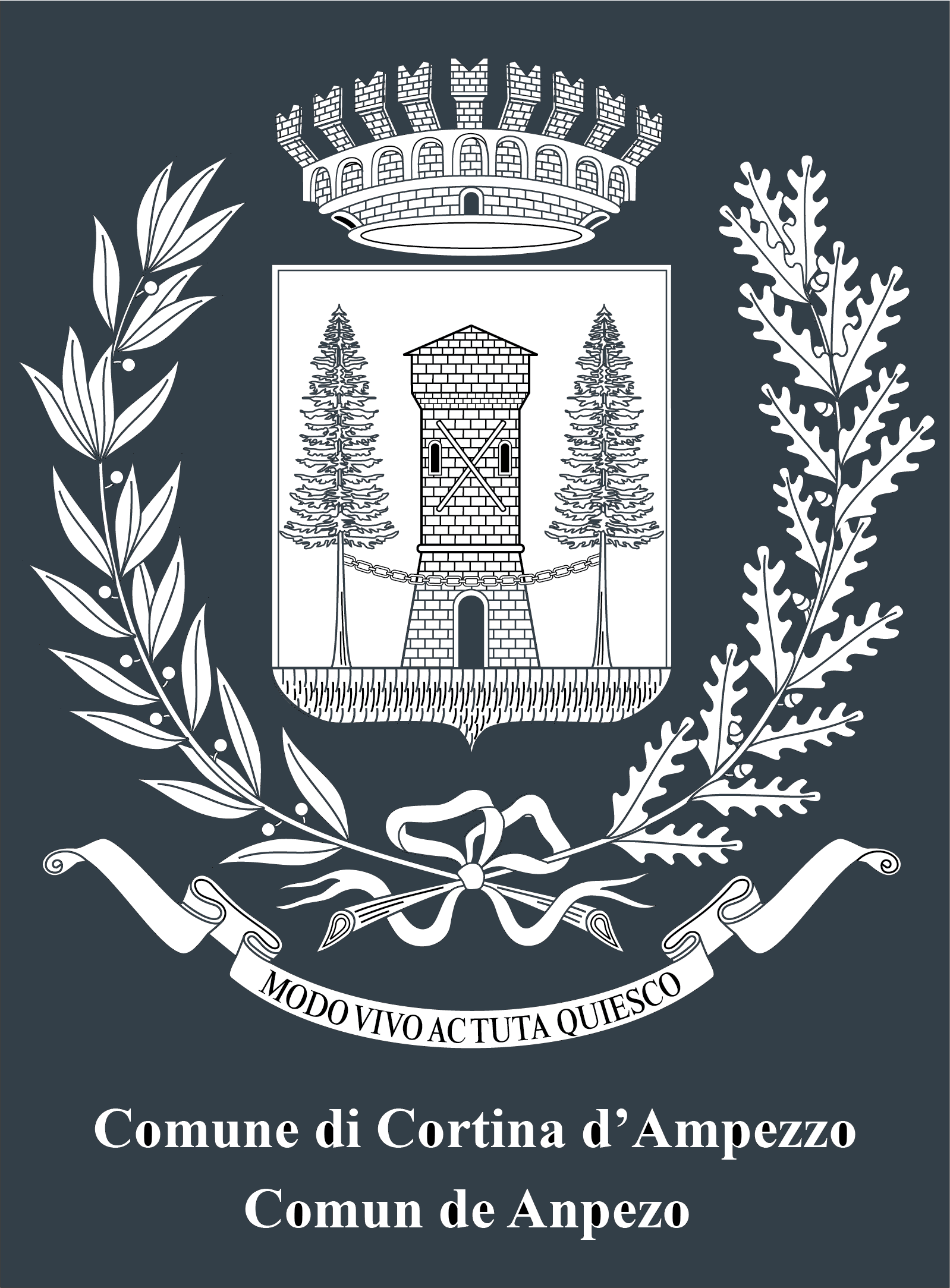
From the centre of Cortina and proceeding along the state road 51 d’Alemagna, it takes just ten minutes by car to approach the site where the Castello di Botestàgno (or Potestagno) once stood. It can be reached by a short hike on path 201 or, during the winter months, by snowshoeing – in this case, we recommend contacting the Mountain Guides.
Today, although only a few remains are left of the majestic building, the place is still worth a visit, not only for its historical value, but also for the beauty of the panorama that can be enjoyed from here. Gaze along the Valle d’Ampezzo following the course of the Boite, the curves of the meadows, the profiles of the Dolomites.
On the origin of the castle, scholars’ hypotheses oscillate between the ninth and tenth centuries, or even the twelfth century.
Over time it has seen various owners: the Patriarch of Aquileia, the Republic of San Marco, Maximilian of Habsburg and, finally, the people of Ampezzo. Today the territory is part of the Natural Park of the Ampezzo Dolomites.

From the centre of Cortina and proceeding along the state road 51 d’Alemagna, it takes just ten minutes by car to approach the site where the Castello di Botestàgno (or Potestagno) once stood. It can be reached by a short hike on path 201 or, during the winter months, by snowshoeing – in this case, we recommend contacting the Mountain Guides.
Today, although only a few remains are left of the majestic building, the place is still worth a visit, not only for its historical value, but also for the beauty of the panorama that can be enjoyed from here. Gaze along the Valle d’Ampezzo following the course of the Boite, the curves of the meadows, the profiles of the Dolomites.
On the origin of the castle, scholars’ hypotheses oscillate between the ninth and tenth centuries, or even the twelfth century.
Over time it has seen various owners: the Patriarch of Aquileia, the Republic of San Marco, Maximilian of Habsburg and, finally, the people of Ampezzo. Today the territory is part of the Natural Park of the Ampezzo Dolomites.

From the centre of Cortina and proceeding along the state road 51 d’Alemagna, it takes just ten minutes by car to approach the site where the Castello di Botestàgno (or Potestagno) once stood. It can be reached by a short hike on path 201 or, during the winter months, by snowshoeing – in this case, we recommend contacting the Mountain Guides.
Today, although only a few remains are left of the majestic building, the place is still worth a visit, not only for its historical value, but also for the beauty of the panorama that can be enjoyed from here. Gaze along the Valle d’Ampezzo following the course of the Boite, the curves of the meadows, the profiles of the Dolomites.
On the origin of the castle, scholars’ hypotheses oscillate between the ninth and tenth centuries, or even the twelfth century.
Over time it has seen various owners: the Patriarch of Aquileia, the Republic of San Marco, Maximilian of Habsburg and, finally, the people of Ampezzo. Today the territory is part of the Natural Park of the Ampezzo Dolomites.

From the centre of Cortina and proceeding along the state road 51 d’Alemagna, it takes just ten minutes by car to approach the site where the Castello di Botestàgno (or Potestagno) once stood. It can be reached by a short hike on path 201 or, during the winter months, by snowshoeing – in this case, we recommend contacting the Mountain Guides.
Today, although only a few remains are left of the majestic building, the place is still worth a visit, not only for its historical value, but also for the beauty of the panorama that can be enjoyed from here. Gaze along the Valle d’Ampezzo following the course of the Boite, the curves of the meadows, the profiles of the Dolomites.
On the origin of the castle, scholars’ hypotheses oscillate between the ninth and tenth centuries, or even the twelfth century.
Over time it has seen various owners: the Patriarch of Aquileia, the Republic of San Marco, Maximilian of Habsburg and, finally, the people of Ampezzo. Today the territory is part of the Natural Park of the Ampezzo Dolomites.

From the centre of Cortina and proceeding along the state road 51 d’Alemagna, it takes just ten minutes by car to approach the site where the Castello di Botestàgno (or Potestagno) once stood. It can be reached by a short hike on path 201 or, during the winter months, by snowshoeing – in this case, we recommend contacting the Mountain Guides.
Today, although only a few remains are left of the majestic building, the place is still worth a visit, not only for its historical value, but also for the beauty of the panorama that can be enjoyed from here. Gaze along the Valle d’Ampezzo following the course of the Boite, the curves of the meadows, the profiles of the Dolomites.
On the origin of the castle, scholars’ hypotheses oscillate between the ninth and tenth centuries, or even the twelfth century.
Over time it has seen various owners: the Patriarch of Aquileia, the Republic of San Marco, Maximilian of Habsburg and, finally, the people of Ampezzo. Today the territory is part of the Natural Park of the Ampezzo Dolomites.





Head Office: Loc. Sacus 4, 32043 Cortina d’Ampezzo (BL) – P.I. 00806650255 | Privacy Policy – Cookie Policy
A partire da giovedì 4 dicembre, ogni famiglia residente a Cortina potrà ritirare gratuitamente la bandiera con il nuovo emblema presso lo IAT di Piazza Roma.
Vivi la storia — sogna Milano‑Cortina.